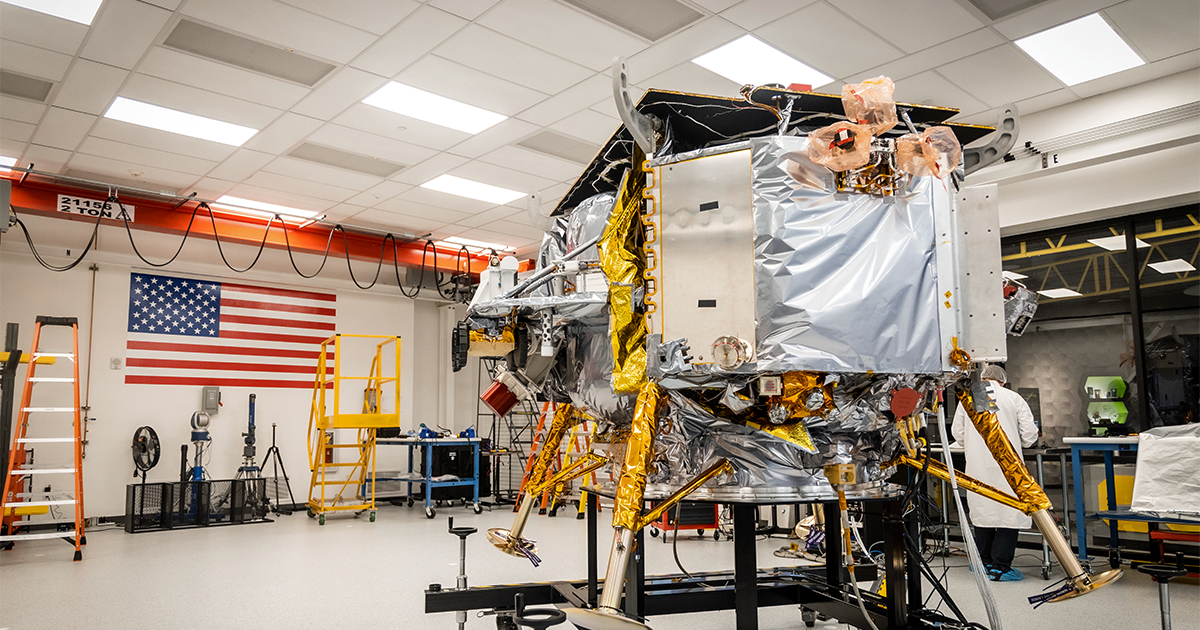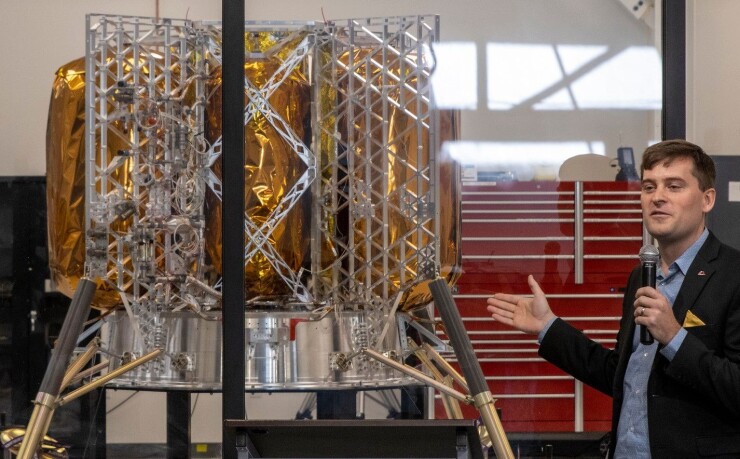To the moon: Pittsburgh turns its tech prowess toward outer space
4 min read

Pittsburgh’s long-running shift from the industrial Steel City to a technological hub is heading in a new direction — toward outer space and the moon.
With Pittsburgh as hub, western Pennsylvania, West Virginia and Ohio are becoming a region where robotics, materials science, engineering and advanced manufacturing come together to serve the new space race.
The non-profit .
“We will start by delivering cargo,” Thornton said, adding that on the second mission, a large moon rover named Viper, which NASA is building, will be delivered to the south pole of the moon which will drill for water there.
“Pittsburgh of all places in the county is leading the race to space and the return to the surface of the moon,” he said. “It will be the first landing to the moon by the United States since Apollo and it’s getting off the ground right here in Pittsburgh.
“The area is not normally known as a space powerhouse — normally you think of Florida or California or Texas as space hubs — but we’re out to make that story change,” Thornton said.
“Watching a company like Astrobotic grow from a team of students spun out of Carnegie Mellon with faculty to now a 220-person, quickly growing company located on Pittsburgh’s North Side, has been an amazing experience,” Justine Kasznica, founding member and board chair of Keystone Space Collaborative, told The Bond Buyer.
“It also highlights the challenges of building a space company in a region that is really not known for space,” she said.
She said early challenges included finding financing, promoting workforce development and attracting talent from outside the region to work for a space company.
Kasznica is also a tech and corporate attorney, leading Babst Calland’s emerging technology practice group in Pittsburgh. She has been outside general counsel to Astrobotic for the past 13 years.
In 2019, space professionals in the city got together to talk about the space industry and the potential for Pittsburgh.
The Keystone Space Collaborative was formed in 2021 when the group realized that “not only were we sitting on a tremendous opportunity in the Pittsburgh broader region — Allegheny, Beaver and Butler counties — but that opportunity extended well beyond the city to the Pennsylvania, Ohio and West Virginia tri-state region,” she said.
“What’s unique about Pittsburgh is that even going back generations, the city has always been at the forefront of innovation,” Matt Smith, chief growth officer at the Allegheny Conference on Community Development, told The Bond Buyer. “We have adapted to whatever the current world might be at a particular time.”
Even 100 years ago, the city was innovating in steelmaking and manufacturing and today it’s really no different, he said.
“That deep legacy that we’ve got in advanced manufacturing, in energy, in innovation, is something that I think is really core to this region and while we recognize that legacy and are proud of it, we’re not resting on it,” he said.
He noted the numerous assets the region still has today.
“We have a very abundant talent pool here — among the best in the world,” Smith said. “And in the specific areas that drive the space sector — robotics, artificial intelligence, autonomy — Pittsburgh is really a world-leading producer of talent.”
He noted that there were 73 academic institutions that are participating in the tri-state space ecosystem and that includes two tier one research institutions — the University of Pittsburgh and Carnegie Mellon University.

Astrobotic
Carnegie Mellon has been a leader in robotics technologies research and related research areas such as machine learning, computer vision and graphics.
The state of Pennsylvania is also doing its part to boost the space hub in Pittsburgh.
During a March visit to Astrobotic, Gov. Josh Shapiro announced that the Appalachian Regional Commission in partnership with the Pennsylvania Department of Community and Economic Development awarded a $400,000 grant to the collaborative to grow the space industry and its workforce.
“Astrobotic is an excellent example of the enormous potential we have here in Pennsylvania to innovate and lead, and we’re proud that the first commercial spacecraft to land on the moon is from Pittsburgh,” Shapiro said.
Pennsylvania has invested more than $5 million in Astrobotic through grants and tax credits while the firm has created about 100 high-paying jobs in the city.
“Gov. Shapiro has been instrumental in creating this new space district in and around Astrobotic, which is really our anchor company in this sector,” he said. “This administration created a space district that has Keystone innovation zone designation which is going to allow us to market the area as a real hub for entrepreneurs and start-ups.”
He noted the “open for business” mindset that Pennsylvania has embraced.
Last year under former Gov. Tom Wolf, the state’s corporate income tax was cut. Starting this year, the 9.99% corporate income tax rate will fall to 4.99% over the next nine years.
“We think a really significant signal to companies looking to make investments is that Pennsylvania has its act in order and we’re making ourselves more attractive for business investments,” Smith said.
Things did not always look so bright for the city.
In 2003, Pittsburgh’s bonds fell to junk ratings amid murmurs of bankruptcy.
In 2018, it finally emerged from 14 years of state oversight and became the second city to exit the state-sponsored workout program commonly known as Act 47.
Now the city’s general obligation bonds are rated A1 by Moody’s Investors Service and AA-minus by S&P Global Ratings and Fitch Ratings. All three agencies assign stable outlooks on the credit.
“Our goal is to build the space industry in the tri-state region. We’re working off of existing assets that are very powerful, so we’re not building something out of scratch — we’re placed squarely in the map to achieve what we want to achieve from an economic development standpoint,” said Kasznica. “The future is bright, but we still have a lot to do.”







